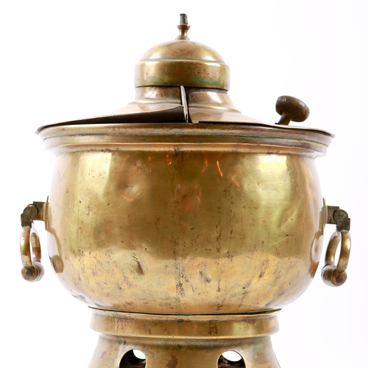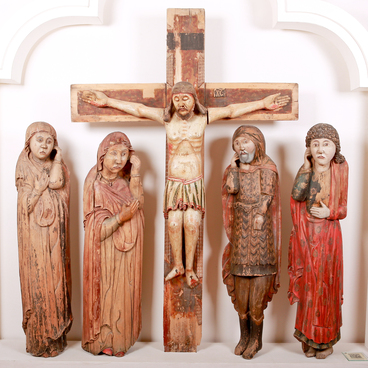Card tables were square, less often triangular and pentagonal pieces of furniture that had a folding tabletop with a green woolen cloth covering. The exhibit from the collection of the Kasimov Museum-Reserve was made in the 19th century, it was used for card games.
The table got its name thanks to the popular card game ‘ombre’, which originated in Spain. In the 16th century, similar interior items came to France and England, and in the middle of the 18th century — to the Russian Empire.
Usually, such tables were stacked against the wall: they were laid out only in the evenings when guests arrived. After the reception with tea or coffee, people in the living rooms was divided into groups ‘according to interests’: young men and girls danced, older ladies embroidered, and older men played cards on ombre tables.
Similar interior items were used in almost all salon card games that involved no more than six players at a time — for example, for preferans and whist. Card tables were not suitable for crowded poker: there was not enough space on the tabletop.
In the 19th century, card games in Russia became so popular that furniture items for them were installed even in guest rooms at postal stations. Sometimes there were four tables for customers at one station.
The folding tabletop had a woolen cloth covering, which allowed players to take notes directly on the table: it was more difficult to erase chalk from rough fabric than from polished wood. In the evening after the game, the notes were erased with special round brushes.
There were also card tables covered with gus, a thin brocaded fabric. Such interior items, decorated with ‘gus patterned with towns and upholstered with gold braid’ were ordered for the palace of the governess Anna Leopoldovna. However, this material was less durable than woolen cloth, so the tables were not durable.
Card tables are still being made. They are mainly used not for card games, as in the 19th century, but for playing chess, backgammon, and checkers. They also produce multifunctional tables that can be used as gaming, tea, coffee, and dining tables.
The table got its name thanks to the popular card game ‘ombre’, which originated in Spain. In the 16th century, similar interior items came to France and England, and in the middle of the 18th century — to the Russian Empire.
Usually, such tables were stacked against the wall: they were laid out only in the evenings when guests arrived. After the reception with tea or coffee, people in the living rooms was divided into groups ‘according to interests’: young men and girls danced, older ladies embroidered, and older men played cards on ombre tables.
Similar interior items were used in almost all salon card games that involved no more than six players at a time — for example, for preferans and whist. Card tables were not suitable for crowded poker: there was not enough space on the tabletop.
In the 19th century, card games in Russia became so popular that furniture items for them were installed even in guest rooms at postal stations. Sometimes there were four tables for customers at one station.
The folding tabletop had a woolen cloth covering, which allowed players to take notes directly on the table: it was more difficult to erase chalk from rough fabric than from polished wood. In the evening after the game, the notes were erased with special round brushes.
There were also card tables covered with gus, a thin brocaded fabric. Such interior items, decorated with ‘gus patterned with towns and upholstered with gold braid’ were ordered for the palace of the governess Anna Leopoldovna. However, this material was less durable than woolen cloth, so the tables were not durable.
Card tables are still being made. They are mainly used not for card games, as in the 19th century, but for playing chess, backgammon, and checkers. They also produce multifunctional tables that can be used as gaming, tea, coffee, and dining tables.

